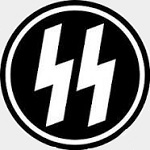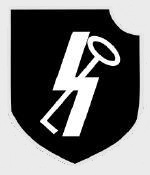Forces of Valor 85022 German Sd. Kfz. 124 Wespe 105mm Self-Propelled Howitzer - 12.SS Panzer Division, Normandy, 1944 (1:72 Scale)
"We must do everything we can to promote anti-tank defense, and work just as hard to guarantee successful counter-attacks through the instrument of powerful tank forces of our own."
- Major-General Heinz Guderian, "Achtung Panzer!"
 The Wespe was designed by Alkett early in 1942, and was chosen as the most practical self-propelled mount for the leFH18 cannon, using the PzKpfw II chassis instead of the PzKpfw III or PzKpfw IV. As an interim measure, the Wespe proved a great success and in February 1943, all further PzKpfw II chassis were ordered to be used for its production. The initial order for 1,000 vehicles was, however, cut back to 835 in late 1943. Furthermore, this total included 159 pieces (without the leFH18/2) designated Munitions-Sf auf Fgst PzKpfw II (Ammunition-SP on chassis of AFV II) which carried 90 rounds with a crew of three.
The Wespe was designed by Alkett early in 1942, and was chosen as the most practical self-propelled mount for the leFH18 cannon, using the PzKpfw II chassis instead of the PzKpfw III or PzKpfw IV. As an interim measure, the Wespe proved a great success and in February 1943, all further PzKpfw II chassis were ordered to be used for its production. The initial order for 1,000 vehicles was, however, cut back to 835 in late 1943. Furthermore, this total included 159 pieces (without the leFH18/2) designated Munitions-Sf auf Fgst PzKpfw II (Ammunition-SP on chassis of AFV II) which carried 90 rounds with a crew of three.
This particular 1:72 scale replica of a German Wespe 105mm self-propelled howitzer is painted in a torrid summer camouflage pattern and served with 12.SS Panzer Division, then deployed to Normandy during 1944.
Sold Out!
Dimensions:
Length: 4-inches
Width: 1-1/2-inches
Release Date: April 2012
 Historical Account: "Heroes Road" - Formed from volunteers of the Nazi youth movement, the average soldier in the SS Panzer Division Hitler Jugend was barely 18 years of age when it was constituted in 1944. Led be such veteran field commanders as Kurt Meyer and Fritz Witt, 12.SS Panzer was sent to France in April 1944 where it was stationed south of Paris when the Allies landed in Normandy that June. It was quickly sent north where they first saw action at Caen and then again at Le Capiquer. It withdrew from the front on July 11th, after suffering grievous losses at the hands of Allied units.
Historical Account: "Heroes Road" - Formed from volunteers of the Nazi youth movement, the average soldier in the SS Panzer Division Hitler Jugend was barely 18 years of age when it was constituted in 1944. Led be such veteran field commanders as Kurt Meyer and Fritz Witt, 12.SS Panzer was sent to France in April 1944 where it was stationed south of Paris when the Allies landed in Normandy that June. It was quickly sent north where they first saw action at Caen and then again at Le Capiquer. It withdrew from the front on July 11th, after suffering grievous losses at the hands of Allied units.
It next saw action at Falaise, where it was tasked with keeping the exit to the Falaise pocket open as long as possible so that other German units could withdraw in good order. While it achieved its objective, the Division was almost completely destroyed and had to be re-formed in Germany with new volunteers. The unit fought in the Ardennes during the bitter Battle of the Bulge, and again in Hungary before ending the war in Austria in May 1945.


